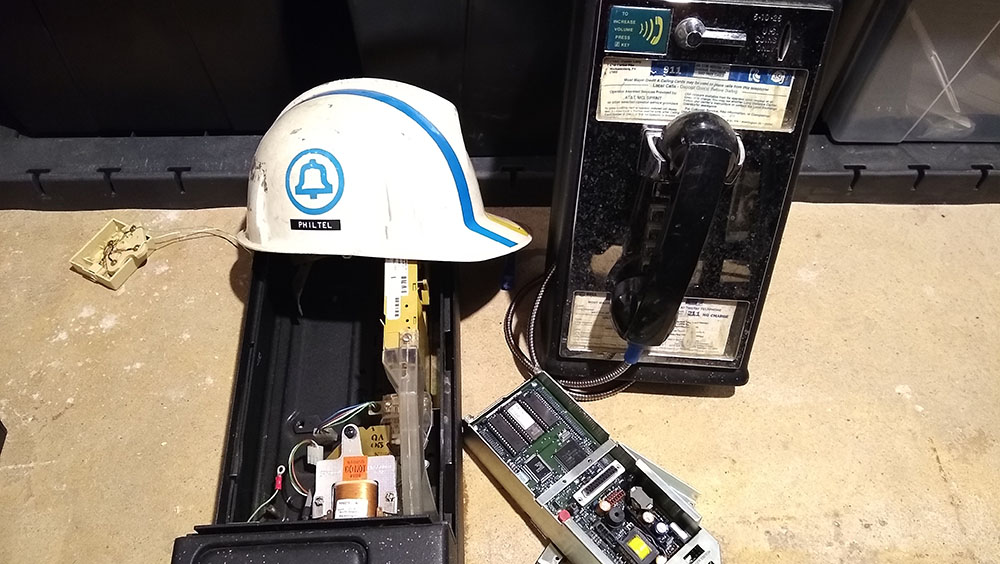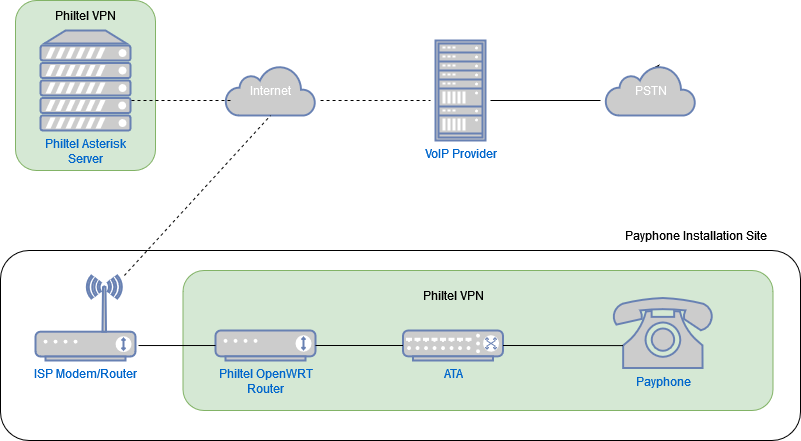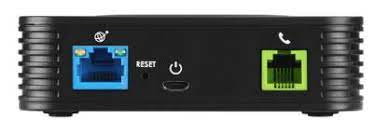About

PhilTel is an amateur phone collective looking to install new (to us) payphones within the city of Philadelphia. Any payphone installed will be completely free-to-use, allowing the user to place calls within North America. Additionally, we would like to provide various experiences and services through the phones; these could be as simple as voicemail, fun as a phone number that randomly calls other payphones, or as complex as an integration with phone collectors’ networks to allow phone-phreaking and exploration!
PhilTel’s mission is to not only provide the public with free-to-use telephones installed throughout the city of Philadelphia (and surrounding areas) but also to educate the public regarding the history and operation of telephony, including general telephony, underlying technologies, and special interest in pay-telephony; to maintain, repair, preserve, curate, and exhibit telephone infrastructure and history by means of research, presentations, public exhibition and installation, and creation of literature; and to provide services for the general public and hobbyists alike to both allow hands-on use of old telephony equipment and also enable like-minded projects via free (gratis) phone programming lines and comprehensive documentation.
Frequently Asked Questions
So I just use this phone to call people?
Yes, you can use a PhilTel phone just like any payphone (without the need to pay) or landline phone! Calls are free to most numbers in North America.
In addition to connecting with the traditional telephone network, we are also looking to connect with collectors’ networks and other payphone projects. For more information check out the Networks page.
How is PhilTel funded?
PhilTel is funded 100% by donations. If you would like to donate, please check out our donations page for options!
We do not play advertisements before, during, or after phone calls.
Are my calls private?
We collect no data from users and have no record or insight into the contents of calls. At most, we may capture the phone number dialed for diagnostic purposes, but this data is not kept long term and we never give or sell this information to anyone.
Further, calls are encrypted from the phone site to our server. Any bad actors at the phone location will not be able to inspect call traffic even if they are on the same Internet connection.
I have an old payphone in my basement, do you want it?
Probably! Please reach out to us via our contact page!
All payphones we utilized will either be acquired from donations or the used market. Contrary to anything you may have heard, it is perfectly legal to own/buy/sell a payphone as a private individual or organization.
How can I start a project like this in my town? Will you help me?
We don’t have the time to address and assist everyone who wants to start a similar project, but we do open-source all of our documentation which is completely free-to-use and non-proprietary.
For a lot of this, you will need someone technical (that may be you, or it may not) to support the hardware and software work to get a project like this off the ground. If you want something similar like a courtesy phone in a local business (and have some basic computer/network troubleshooting skills, if you can configure your home router you can get the following set up), you can leverage a subset of the technology we use: An Analog Telephone Adapter (ATA) and a Voice over Internet Protocol (VoIP) provider. Using a VoIP provider like Voip.ms you can register an account to buy a telephone number and have some money to cover calling costs. You can then configure an ATA like the Grandstream HT801/HT802 to use your Voip.ms account and then any normal landline phone you plug into the ATA will be able to make and receive calls!
Are there other projects like this?
Futel is a Portland, Oregon-based phone company started in 2014 by Karl Anderson. Futel currently operates twelve free-to-use phones (both payphones and armored phones) within Oregon, Washington, and Michigan, including one at Right 2 Dream Too, a self-managed houseless encampment in Portland. Fore more information, visit
Talk To Me is a network of five public payphones located in each of the five boroughs of New York City, that only call each other. Participants who pick up a TTM receiver set the other four ringing, inviting passing New Yorkers to answer the call. Upon connection, two unsuspecting strangers are thrust into conversation and left to navigate a serendipitous interaction with their neighbor. Talk To Me was launched in June 2022 by Jordan Seiler. For more information visit
OIRCT is a project in France setting up telephone booths with free-to-use, public telephones.
Did I see you in a news article or hear about you on the radio/television?
We’ve been featured or mentioned in the news several times. We maintain a list below of the ones we know about for reference.
- 2024-08-09 - Public phones make a comeback in White River Valley - vnews.com
- 2024-08-08 - Free Calls from Retro Payphone - ourherald.com
- 2024-04-12 - Ring, Ring, Naveen’s Calling! - 34st.com
- 2023-11-13 - JawnCon 0x0: A Strong Start With A Bright Future - hackaday.com
- 2023-06-30 - Story2Share: Payphones get unexpected spotlight - NBC-2 Fort Myers
- 2023-03-02 - DelVal Entrepreneur Installs a Free-to-Use Payphone in Philly - delawarevalleyjournal.com
- 2023-02-13 - In a high-tech world, this duo is installing free-to-use pay phones across Philadelphia - technical.ly
- 2023-02-03 - Remember Pay Phones? Philly’s Bringing Them Back for Free - howstuffworks.com
- 2022-12-21 - Morning Edition - npr.org
- 2022-12-20 - As It Happens with Nil Köksal, Chris Howden - cbc.ca
- 2022-12-20 - The Jerry Agar Show - Newstalk 1010 Toronto
- 2022-12-17 - Philadelphians welcomed PhilTel’s first free public phone as a small way to resist big tech - Inquirer.com
- 2022-12-16 - Remember the pay phone? This man is bringing them back at no cost - Washingtonpost.com
- 2022-12-16 - Remember Pay Phones? A Philly Man Is Bringing Them Back Without the Pay Part - NBC Philadelphia
- 2022-12-05 - Volunteers in Philadelphia have plan to reinvent public phones - CBS Philadelphia
- 2022-12-05 - Free pay phones coming to Philadelphia for people without cell phones - KYW Newsradio
- 2022-12-04 - A volunteer collective is setting up free pay phones in Philadelphia - cnn.com
- 2022-12-03 - Philadelphia is taking the city back to the past by reinstalling pay phones - Upworthy.com
- 2022-12-03 - The return of pay phones in Philly? One hacker wants to make it happen - Inquirer.com
- 2022-12-01 - As last pay phones disappear in Philly, new project envisions a free network of cloud-based kiosks to make calls - Phillyvoice.com
- 2022-11-29 - Pay Phones Are Coming Back in Philadelphia Thanks to Linux, No Quarters Required - Makeuseof.com
- 2022-11-28 - How open source is revitalizing the payphone - Opensource.com
What is ‘phreaking’?
Phreaking is a term to describe the act and culture of exploring telecommunications systems, usually the public telephone network. PhilTel is phreaking-friendly, and you can read more about some specific phreaking acts that can be performed on the PhilTel network on the Phreaking page.
How does the PhilTel network work?
To power the telephone network that drives the payphones, we are making use of commodity hardware (especially used/discarded and low-power-consumption hardware) and open-source software where available. The workhorse of our network is an Asterisk-based Public Branch eXchange (PBX) running on a virtual private server (VPS) on the Internet. Asterisk acts a bit like a bridge between the Public Switched Telephone Network (PSTN) and our collection of payphones; we can facilitate connections between the payphones and the outside world seamlessly. To connect to the PSTN, we get service through a Voice over Internet Protocol (VoIP) provider (think of them like an Internet Service Provider but for telephony). However, Asterisk is much more powerful than a simple traffic controller, and it lets us create our own services or connections to private telephone networks that any caller can access!
Each site where a payphone is installed will connect to our Asterisk server through two pieces of hardware: a GL.iNet GL-AR300M16 router and a Grandstream HT801 Analog Telephone Adapter (ATA). These devices connect to mains power (pulling less than 1A at 5V in total), though we hope to explore solar options in the future.

The router (similar to your Internet router at home) runs software called OpenWRT that allows for more robust features than typical router software and provides a consistent experience for the administrator configuring it (even if we had many routers made by different brands). Another piece of software called OpenVPN is installed on both the router and our Asterisk server to provide an encrypted Virtual Private Network (VPN) so devices connected to the router can communicate with services on our server as though they were physically on the same network.

With the VPN, any bad actors using the same network as our phone at the installation site will not be able to investigate any traffic related to a call being made. Further, PhilTel does not monitor who is using the phone or the contents of any call, though phone numbers may reside in our server logs until they are cycled out.
But how does the payphone, or any old phone with an RJ-11 jack for that matter, communicate with our Asterisk server? This is where the ATA comes in. The ATA has two jacks on it: one RJ-11 jack for a phone and one RJ-45 jack to connect to a router.

Essentially, the ATA acts as an analog-to-digital converter and helps our old payphone speak the popular Session Initiation Protocol (SIP), allowing Asterisk a way to send/receive calls to our payphone over the Internet! To the payphone, the ATA behaves just like the PSTN would, so everything works the same way it would if the phone was connected to a standard landline.

For now, PhilTel phones make use of a “coinless” circuit board that replaces the existing electronics in the phone that would determine how much to charge for calls and handle payments. The new circuit board has a much smaller footprint than the older board and mounts cleanly to the back of the phone’s keypad. In the future, we hope to re-purpose the older phone electronics to reduce waste and still keep calls completely free!